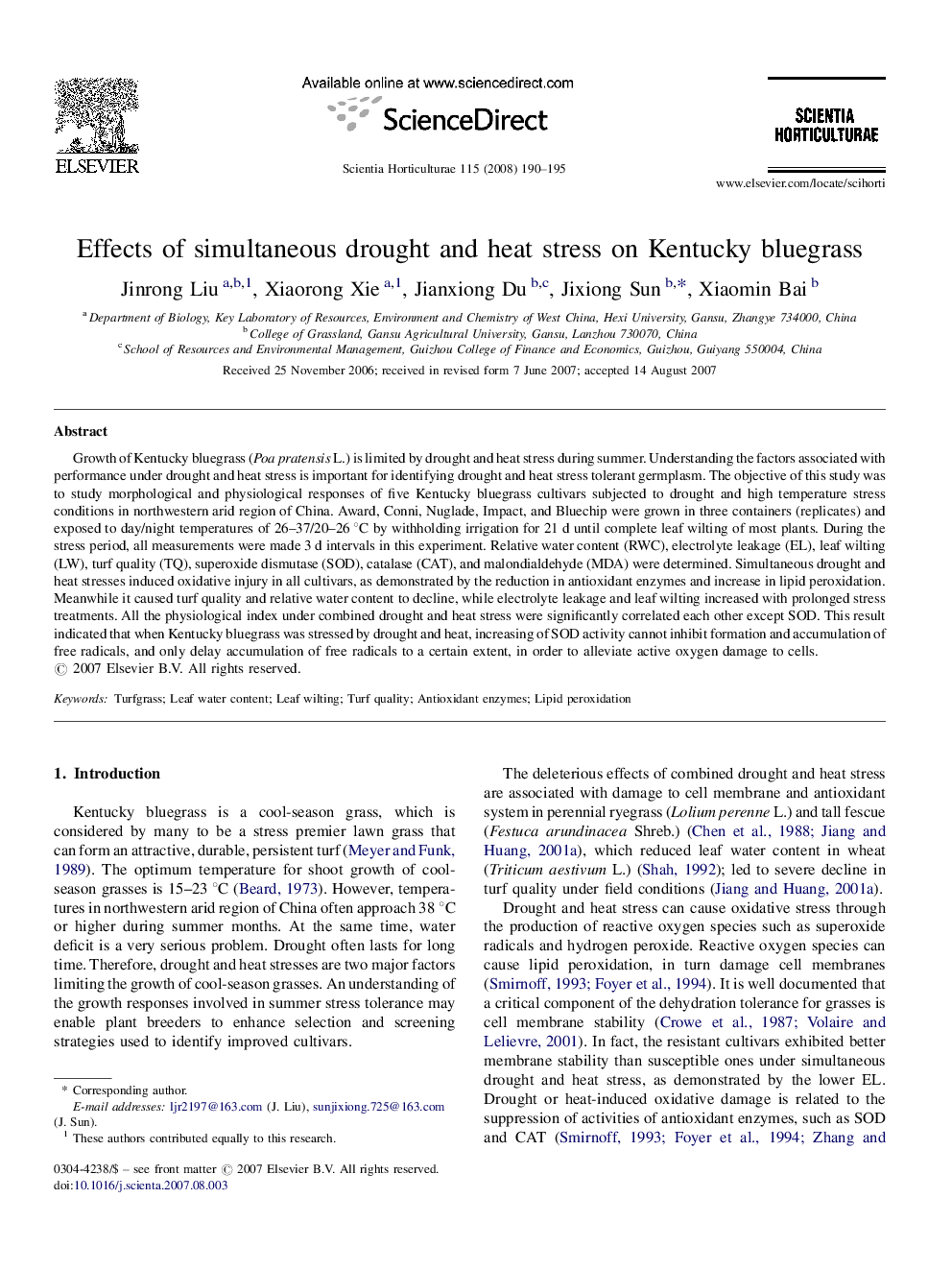| Article ID | Journal | Published Year | Pages | File Type |
|---|---|---|---|---|
| 4569508 | Scientia Horticulturae | 2008 | 6 Pages |
Growth of Kentucky bluegrass (Poa pratensis L.) is limited by drought and heat stress during summer. Understanding the factors associated with performance under drought and heat stress is important for identifying drought and heat stress tolerant germplasm. The objective of this study was to study morphological and physiological responses of five Kentucky bluegrass cultivars subjected to drought and high temperature stress conditions in northwestern arid region of China. Award, Conni, Nuglade, Impact, and Bluechip were grown in three containers (replicates) and exposed to day/night temperatures of 26–37/20–26 °C by withholding irrigation for 21 d until complete leaf wilting of most plants. During the stress period, all measurements were made 3 d intervals in this experiment. Relative water content (RWC), electrolyte leakage (EL), leaf wilting (LW), turf quality (TQ), superoxide dismutase (SOD), catalase (CAT), and malondialdehyde (MDA) were determined. Simultaneous drought and heat stresses induced oxidative injury in all cultivars, as demonstrated by the reduction in antioxidant enzymes and increase in lipid peroxidation. Meanwhile it caused turf quality and relative water content to decline, while electrolyte leakage and leaf wilting increased with prolonged stress treatments. All the physiological index under combined drought and heat stress were significantly correlated each other except SOD. This result indicated that when Kentucky bluegrass was stressed by drought and heat, increasing of SOD activity cannot inhibit formation and accumulation of free radicals, and only delay accumulation of free radicals to a certain extent, in order to alleviate active oxygen damage to cells.
